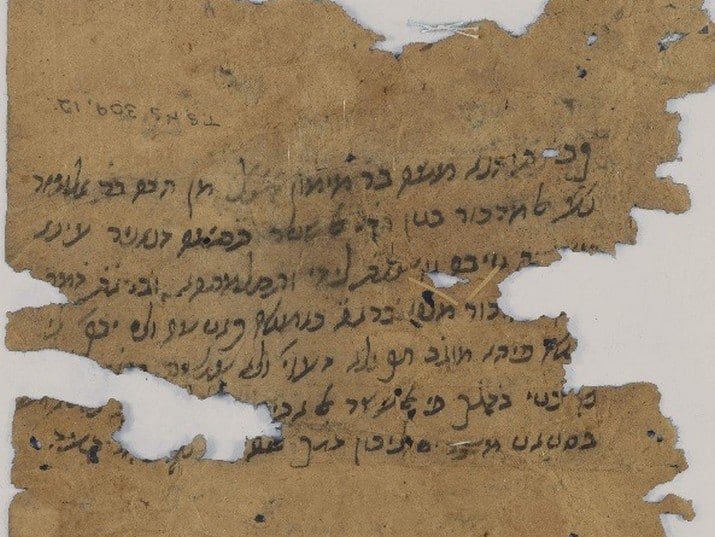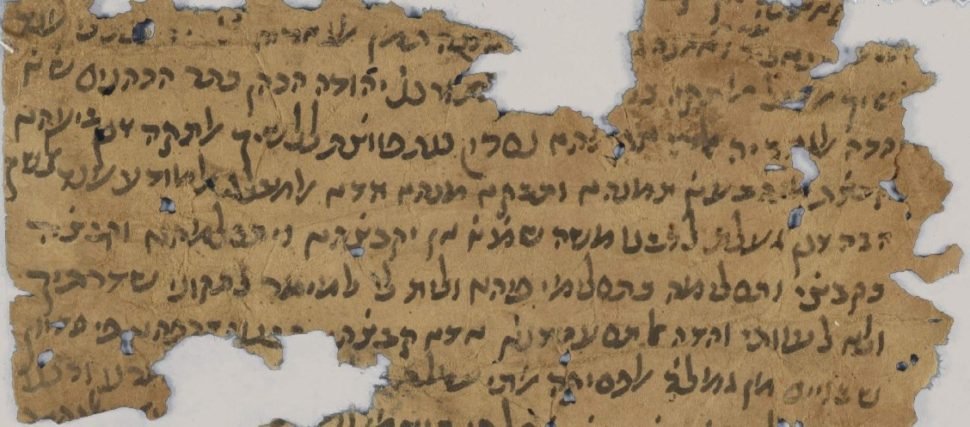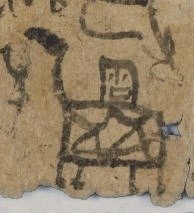Did you know that Maimonides’ first public activity in Egypt was a large-scale mission to get Jews out of Crusader captivity?

In a letter preserved in the Geniza (which has since disappeared) Maimonides makes an appeal to the various communities “Regarding the captives, may our God release their bonds”, and asks them to donate as much as they are able.
Maimonides describes how he and his colleagues “all the Dayanim [Rabbinical court judges] and the elders and the Torah scholars have all been going day and night and encouraging the people in Alexandria, in the synagogues and the marketplaces and at the gates of the houses” in order to raise the hefty sums of money required to redeem the captives. The letter mentions that the funds are being stockpiled by the emissary of Maimonides, Rabbi Aharon Halevi.

A receipt for sale of the maidservant
Several other documents dealing with this redemption of captives were also preserved in the Geniza. It is important to remember that at the time, Maimonides was not yet the renowned Rabbi he would become, but simply Moshe son of Maimon, a young 30-something year old scholar, a newly-arrived luminary who had fled from the terror of the Almohad Caliphate in Morocco. The actions he took to redeem captives were dynamic and effective and they may have been one of the reasons for his rapid ascent in becoming a leader of the Egyptian Jewish community.
One of the documents preserved in the Geniza is an order of payment, with a receipt on the back of it for an amount donated for the redemption of captives in the city of El Mahalla on the Nile Delta, signed by Maimonides himself. The sum was donated by Hiba (Arabic for gift, the equivalent of the Hebrew name Natan or Netanel), who raised the money by selling a maidservant named Nassrin.
The receipt documents the sale of “the maidservant…whose name is Nasrin”. In the payment order the seller of the maidservant testifies that “I authorized our Rabbi Moshe” to receive the sum, “and these nine dinars and when our Rabbi will receive them, he will spend them in order to redeem captives.” The payment order was signed by the same ‘Aharon Halevi’ mentioned above as Maimonides’s emissary and the date of confirmation of the order is “the middle ten days of the month of Elul” in the year 1170.

I authorized our Rabbi Moshe
On the back side of the page is the ‘receipt’, in the handwriting of Maimonides himself (which we are familiar with from other documents): “I, Moshe son of Maimon, received it from Hiba son of Elazar may he rest in peace who is mentioned on the front of this document… and I wrote to him about this in the last ten days” most likely during the month of Elul. In other words, several days after the payment order.
(The payment order and the receipt can be found in the Cambridge University Library, TSNS309.12, and were published, together with other documents on the topic, by S.D. Goitein in an article in his book ‘The Settlement in the Land of Israel at the Beginning of Islam and During the Crusader Period’ (Hebrew) page 312 onward)
This article first appeared in Hebrew on Moshe Yagur’s Facebook page, Cairo Geniza Micro-history.
 Cairo Geniza – A Micro History
Cairo Geniza – A Micro History
La sinagoga de Ben Ezra fue construida hace miles de años en Fustat, el corazón del antiguo Cairo, y sigue en pie hoy en día. En esta sinagoga había una sala especial en la que los judíos de Fustat depositaban sus desgastadas y desgarradas escrituras: liturgia judía, matrimonio ketubot, divorcio, documentos judiciales, cartas privadas y más. Esta página está dedicada a esas personas y sus vidas: con quién se casaron y cuándo, con quién se pelearon, qué cocinaron para el shabbat, dónde vivían, en qué sinagoga rezaban y qué sinagoga juraban que nunca pisarían. .
Source: The librarians
 eSefarad Noticias del Mundo Sefaradi
eSefarad Noticias del Mundo Sefaradi

